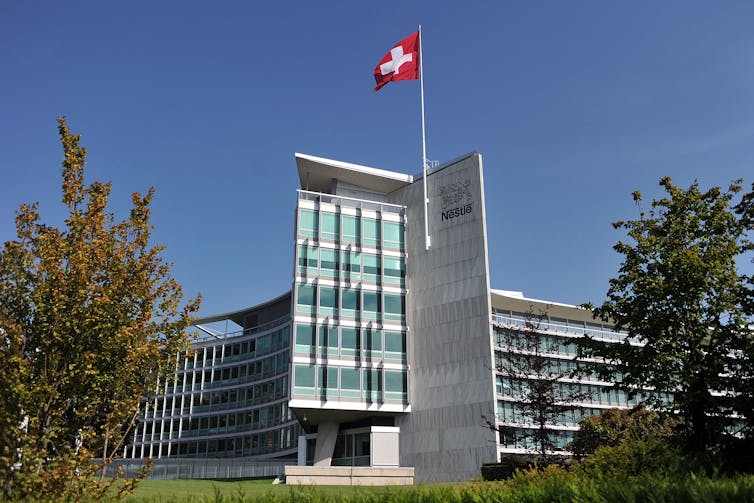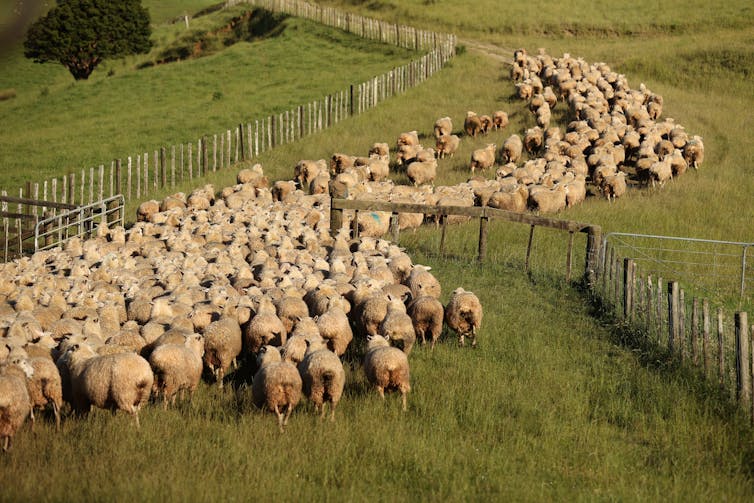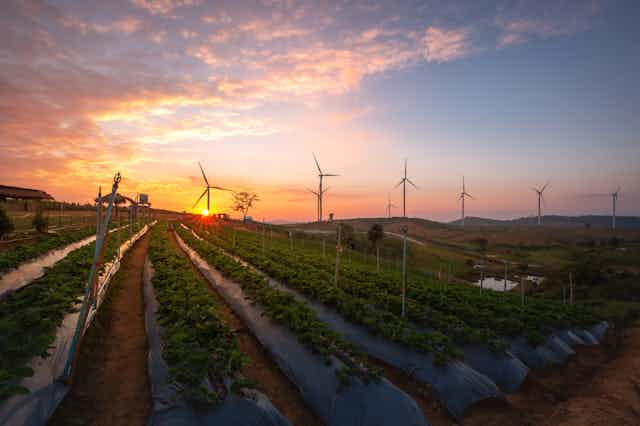The potential for alternative foods to displace and disrupt conventional agricultural production has been discussed and debated for some time. While it may still be too early to make firm predictions, the trends are clear.
In 2021, Catherine Tubb and Tony Seba predicted alternative foods were poised to cause major disruption. They drew attention to the advantages of these new technologies: quality and cost, lower carbon footprint, decentralised production close to markets, and freeing up agricultural land for ecological restoration and carbon sequestration.
This echoed a 2019 report from global consultancy firm Kearney, which concluded “novel vegan meat replacements and cultured meat” have serious disruptive potential.
The major threat comes not from vegan markets, which were recently reported to be levelling out or even declining in the UK, but from substitution of commodity products in manufactured foods. This has clear implications for economies such as New Zealand’s.
Evolving new technologies
Key alternative food technologies include precision fermentation, electro-refining to produce fats and oils, and cultured meat production. Many are developing rapidly.
Finnish start-up Solar Foods is completing a full-scale factory where a precision fermentation process will produce a nutritious, high-protein, low-fat powder suitable for use as a food ingredient.
The product has a greenhouse gas footprint of about 1 kilogram of CO₂ equivalent per kilogram (under Finnish conditions) – about 11% of that for whole milk powder produced in New Zealand. The product has already been approved for use in Singapore, which has also approved cultured chicken meat, as has the US.
Read more: Singapore approves cell-cultured chicken bites – who will be the first to try them?
For cultured meats, energy use equivalent to 45 kilowatt-hours per kilogram (kWh/kg) and a carbon footprint of about 12% and 17% of that for exported New Zealand beef and lamb, respectively, have been reported.
Algal oils are available and scalable. Plant-based leather substitutes such as cactus leather are also on the market. The electro-refinery production of fats and oils using green hydrogen is in the early stages of development.
The European Union recently allocated €50 million to support precision fermentation start-ups. Research into cow milk production using green hydrogen is proceeding there under the title “Project Hydrocow”. In New Zealand, Daisy Lab is developing a microbial-based milk protein product.

Pressure to reduce emissions
With the recent announcement that average temperatures in many parts of the world reached nearly 1.5°C above pre-industrial levels in 2023, there is increased urgency to reduce methane emissions, which would reduce global warming.
Under New Zealand’s new government, however, agriculture will likely not pay for emissions until 2030.
Nestlé, a major customer of dairy co-operative Fonterra, has announced a policy to pursue net zero emissions by 2050 across all operations, including its supply chain (which accounts for 95% of overall emissions).
Fonterra’s response has been to focus on emissions intensity (per kilo of product) rather than absolute emissions. This risks increasing New Zealand’s greenhouse gas emissions if gains are negated by increases in total production.
Read more: Renewable projects are getting built faster – but there's even more need for speed
Renewable energy resources
A factor commonly overlooked in these analyses is the renewable energy required to manufacture alternative foods. For example, replacing 25% of the milk protein produced in New Zealand during the 2019-2020 season with a precision fermentation product would require about 13% of typical New Zealand annual electricity production.
This could be generated by a 4.4 giga-watt (GW) solar photovoltaic farm, 1.7GW of onshore wind capacity, or a 1.3GW offshore wind farm. The production of cultivated meat would need a further 0.4GW of offshore wind.
Fortunately, all these options are within the scope of planned and potential new generation in New Zealand. However, the demand would be offset by the parallel downsizing of conventional animal-based food processing.
Downsizing the dairy industry by 25% would reduce New Zealand’s emissions by 4.5 megatonnes of CO₂ eqivalent per year (MT-CO₂e/y). There would also be a 60-year average of 2 MT-CO2e/y from carbon sinks created by rewilding freed-up farmland.
Allowing for emissions associated with replacement technologies, a conservative net removal of 5.3 MT-CO₂e/y is possible – or 6.7% of 2020 gross emissions.
Any opportunity for New Zealand to pursue alternative food production methods and get ahead of global trends would depend on how much other countries chose to locate alternative food production within their own borders, or at least closer to major markets.
It would also depend on their ability to access substantial quantities of renewable electricity. For example, should a proposed submarine electricity link between Australia and Singapore eventuate, large-scale production of alternative foods could be enabled in South-East Asia.

An integrated plan
New Zealand has, of course, experienced significant agricultural disruptions in the past, including the major downsizing of the sheep industry following the removal of subsidies and the introduction of synthetic carpets. Presently, carbon farming is causing a further decline in sheep numbers as pasture is converted to forest.
The challenge will be to assess the extent to which the predicted disruption from alternative foods threatens traditional food production systems.
Funds generated by the Emissions Trading Scheme would be well spent on transition options for farmers in animal agriculture. This could involve paying them to downsize and move into alternative careers, including food production, rewilding or eco-education.
While not everyone agrees about their scale or speed, the direction of developments seems clear. Combined with increasing concern over climate change and consumer preferences for low-footprint foods, developing an integrated climate, energy and alternative food plan for New Zealand seems eminently timely.
The author thanks Paul Callister for his helpful comments and suggestions on this article.

